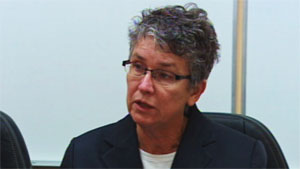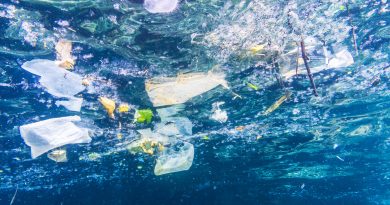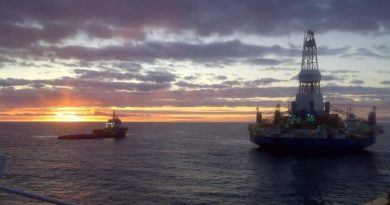Several probes will examine Alaska drill rig accident– and other Shell problems
 As Unified Command descends on the once-beached Kulluk, combing the drilling rig for clues about its structural integrity and answers to what went wrong during the tow operation in Alaska, others are peering closely as well.
As Unified Command descends on the once-beached Kulluk, combing the drilling rig for clues about its structural integrity and answers to what went wrong during the tow operation in Alaska, others are peering closely as well.
On Tuesday, United States Secretary of the Interior Ken Salazar said his department has launched an expedited, high-level assessment of the 2012 offshore drilling program in the Beaufort and Chukchi Seas.
The assessment — due in 60 days – will review practices and identify challenges learned from drilling operations this season.
Specifically, the assessment will examine:
• Problems Royal Dutch Shell encountered during certification of its oil spill containment vessel, the Arctic Challenger;
• Deployment of the Arctic Challenger’s containment dome; and
• Operational issues with the arctic drilling rigs Noble Discoverer and Kulluk.
The three ships are the centerpieces of Shell’s Arctic drilling operation and all have faced numerous delays and multiple missteps this season. The Challenger — a state-of-the-art oil containment barge — failed miserably during a September test before regulators when a valve failed, crushing the Challenger’s containment dome. Just before the Kulluk’s grounding, the Coast Guard cited the Discoverer for serious issues involving safety and pollution-prevention systems. That was only the latest in a series of problems with the Discoverer, which included a smokestack fire in November and a possible grounding while at anchor in the Aleutian Islands port of Dutch Harbor this summer.
Can Shell meet ‘strict standards?’
The Interior Department review will look at Shell’s safety management systems, its oversight of contractors and its ability to meet “strict standards in place for Arctic development,” according to a statement. The review will be led by the Interior Department’s Bureau of Ocean Energy Management Director Tommy Beaudreau, the bureau’s first director. Previously, Beaudreau led Interior’s reforms of the oversight of offshore oil development after the Deepwater Horizon disaster in the Gulf of Mexico.
The Interior Department isn’t the only government entity calling for answers. Sen. Mark Begich, a longtime supporter of drilling in the Arctic, said he would call for a formal hearing as co-chair of the Senate Commerce Subcommittee on Oceans, Atmosphere, Fisheries and the Coast Guard. In the letter, sent to Coast Guard Admiral Robert J. Papp, Jr. and Shell President Marvin Odum, Begich outlined questions he expects answered — including the adequacy of tow ships for a job in “extreme, but not unexpected” weather, the failure of the tow vessel Aiviq’s engines, reports of inadequate spare parts inventory, and failure of the tow systems attached to the Kulluk.
The Coast Guard formally requested a marine casualty investigation Tuesday. According to a statement, investigations are common when a vessel casualty has considerable regional significance, indicates “vessel-class” problems or is the best means to assess technical issues that may have contributed to the incident.
In recent days, Capt. Paul Mehler, federal on-scene coordinator, requested an investigative team from the Coast Guard Center for Excellence in Louisiana. Those findings will be included in the Coast Guard’s final report, according to Mike Lutz with Unified Command.
Will Shell’s investigation be public?
The formal investigation will probe every aspect of the incident, including the causes, whether there is evidence of any failure of material, or whether there is evidence of misconduct, inattention, or negligence.
The investigation is expected to take several months, according to the Coast Guard, due to the extent and depth of its inquiry.
The Coast Guard has said previously it will make its findings public. Shell has said it will conduct its own investigation as well, but has not indicated whether it would make the findings public.
Kulluk remains stable
On Monday, crews successfully removed the Kulluk from the rocky beach of Sitkalidak Island it had rested on since Dec. 31. From there it was towed 45 nautical miles to refuge in Kiliuda Bay, where crews began assessing the vessel.
According to Unified Command — the joint operation that includes members of Shell, the Coast Guard, Noble Drilling Corp., Alaska Department of Environmental Conservation and Kodiak Island stakeholders — the Kulluk remains anchored in the bay. Support vessels will remain with the Kulluk during its assessment, while other resources contracted specifically for the salvage operation are in the process of demobilizing. Remote-operated vehicles — essentially mini-submarines — and divers are being dispatched to assess the hull of the Kulluk.
Unified Command hasn’t indicated how long the assessment will take, nor where or when it plans to move the Kulluk.
Unified Command is also surveying the area to locate lifeboats and debris blown off the Kulluk during the grounding. So far, no visible sheen or other oil spill has been found in the area. The Kulluk is carrying up to 150,000 gallons of diesel fuel and up to 12,000 gallon of other petroleum-based products.
Contact Suzanna Caldwell at suzanna(at)alaskadispatch.com
For more northern stories from Alaska Dispatch, click here



